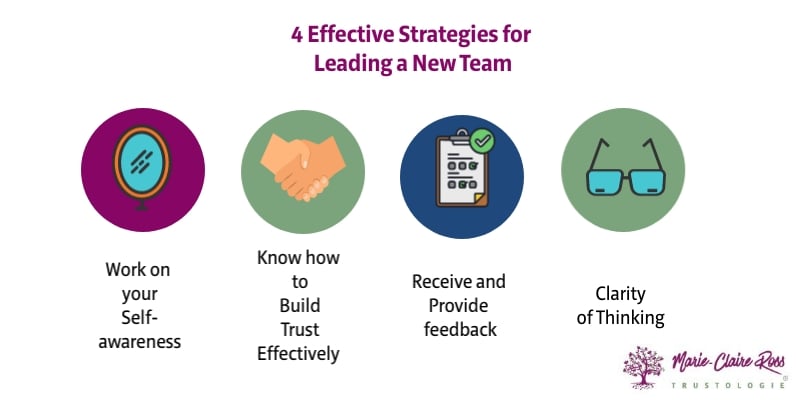
We all know the world of work is undergoing profound changes. What makes change difficult is that organisations, and leaders, are still applying a framework designed for...
Over the last two years, the pandemic has been a catalyst to reevaluate our lives and work.
According to Gartner research, 65% of employees believe that the pandemic has made them rethink the place that work should have in their life.
There has been a big realisation that work needs to add to your life, not detract. Today, people now weigh up how valued they feel in their jobs versus whether they are merely creating outcomes and value that benefit others.
The Great Resignation is a result of employees no longer wanting to stay at workplaces where they feel overwhelmed and under-valued.
Despite the uncertainty we have all felt, one thing is certain; people don't want to go back to the world of work pre-pandemic. Employee's priorities, expectations and values have shifted. People have left isolation with a new sense of self-awareness and self-worth.
According to Satya Nadella, Chairman and CEO, Microsoft, “Thriving employees are what will give organisations a competitive advantage in today’s dynamic economic environment.” As a leader or manager, if you want to create thriving teams of talented people, you need to know what matters most to employees today. This means that you can't lead teams like you did three years ago.
Let's take a look at the 10 areas where employees are demanding a different leadership approach:
1. Flexibility is a keeper
This one is a no-brainer, but it bears repeating because there are still leaders who are secretly hoping that everyone will come back into the office five days a week. The truth is that flexibility is no longer a perk; it's an expectation.
Working from home gives people autonomy with how they work and in what type of work environment. Workers have the ability (finally) to balance personal needs with achieving business outcomes.
According to Future Forum, 80% of all knowledge workers want flexibility in where they work, and 94% want flexibility in when they work.
This requires leaders to accept that the majority of their employees will spend some part of the week working from home and must provide the right emotional and physical support systems.
2. Respect people's time
One of the big reevaluations people have made about work is the importance of health and well-being. Employees want to know their employer cares about them as a person.
Employees no longer want to receive emails late at night or phone calls on weekends. Out of hours notifications about work, sends the subtle message to people that they must always be working.
Employees want leaders who respect their time and do not make demands outside of office hours. The reality is that even if a generic corporate email is sent out on the weekend, that notification will pull people out of personal time into work. Even if nothing is expected of them at that time.
If you do need to send an email over the weekend, so you don't forget, schedule it to email out on Monday morning. Don't send it at a time that suits you.
3. Don't work people really hard
Today, people don't want a leader that makes their life stressful. They want work where they are thriving, not burning out. Working 10 hour days plus is no longer seen as heroic.
An old-school perception is that to get the best of people, you have to constantly drive people to work. Some leaders confuse high performance with working people harder and faster.
This means that employees are expected to work really long hours to get a job done. Often times, this could be avoided if deadlines were more realistic, expectations were clearer or if there were more staff to help out.
Pushing people to keep delivering because you haven't resourced projects correctly makes people feel undervalued and resentful. So too are leaders who are overly critical or demanding. Even worse is when leaders create false deadlines and fail to consider (or care) about the impact that has on their people's time outside of paid work.
Of course, workload cycles can be hard to predict. What is important are leaders who provide time and space for people to recuperate after busy times. It also requires co- creating deadlines that takes into account competing workloads. More importantly, it requires leaders who thank and acknowledge employees for their effort.
4. Communicate clear expectations
During the pandemic, many employees have realised they don't want to work for a boss or company that is unclear about directives or who keep changing their mind, so the rules of how work gets done keeps changing resulting in chaos and confusion (even worse, if they don't apologise or acknowledge their flip-flopping). This uncertainty can be incredibly stressful and can be avoided with more thoughtful leadership.
Leaders can reduce a lot of unnecessary stress by being clear on employee's roles, responsibilities, objectives and the company vision, as well as their expectations on what good quality work looks like. These discussions need to be regularly repeated, especially for any new tasks or projects.
5. How work is measured
A lot of leaders are still measuring the productivity of their employees from tools that were developed when everyone could be seen working in the office. This approach is out-dated, as well as the mindset that created it.
Organisations and leaders need to pivot away from measuring outputs or activities to looking at outcomes. A Citrix Work 2035 study found that 86% of employees said they would prefer to work for a company that prioritises impact over activities. People want to be measured on the value they deliver, not the volume they deliver.
This means leaders need to lose the obsession with tracking activities such as number of hours worked or the number of online meetings. When employees lack the context behind how their productivity is being measured it undermines trust. Instead, leaders need to support their employees and help them prioritise the work that's most impactful to the organisation.
6. Be trusted to get work done
As human beings, we loved being trusted. Employees want leaders who trust them to get work done (even when they can't see them working).
When leaders don't trust their employees they fall into micromanagement and lots of unnecessary meddling and belittling. While it might come from a good place of wanting to achieve high quality work, it makes employees less productive, engaged and productive.
Interestingly, a study found that just over half of HR directors (54%) believe their organisation would be more productive as a whole if employees felt that their employer/senior management team trusted them to get the job done without monitoring their progress.
7. Face-to-face work must have value
According to Microsoft's Work Trends Index Report, 81% of employees say it’s important that their managers help them prioritise their workload, but less than a third (31%) say their managers have ever given clear guidance during one-on-ones. This highlights the importance of increasing mentoring and communication in the workplace.
Leaders need to pivot from worrying about whether their people are working enough to helping them focus on the work that’s most important. This even includes defining what work doesn't matter and what does.
In the age of remote work, one-on-ones reduce the potential for misunderstandings and create rapport. They also help direct reports feel more connected to their leader and their organisation as a whole. Done well, they can also stop unnecessary issues, reduce the likelihood of burnout and improve individual performance.
9. The meaning behind work
According to McKinsey, employees are five times more likely to be excited to work at a company that reflects on its impact on the world. People want purpose in both their working and personal lives.10. Leaders that are accountable
Leaders are role models and their behaviours are closely watched by employees for cues on acceptable workplace behaviours. People watch their leaders to see if they match their words and actions.
This means employees want proactive leaders that follow through on requests, return their emails in a timely manner and are also accountable for results.
Employees want leaders they can trust and respect. They want leaders who behave in alignment with character traits that they hold in high esteem.
The future of work requires overhauling the relationship between employers and workers. This involves handing power to employees – to choose how they work, when they work, what they work on and why. And core to this is building trust. Leaders who trust people to choose how they spend their time and employees who trust leaders to do the right thing by them.
According to a Gartner study, 90% of HR leaders say that to succeed in the future, leaders need to operate in a more human way.
This requires leaders who understand and embrace employee wants and needs, putting wellbeing as a priority. This requires ensuring employees feel valued, appreciated, respected, connected and supported with learning opportunities.
If you want to learn more about how to improve the people-focused skills of your workforce, come and join me for a series of free webinars. If you are in HR, L&D or Culture, register here for How to Enhance Leadership Capability around People-Focused Behaviours. If you are a team leader, register here to attend How to Build a Thriving, Productive Team Culture.

We all know the world of work is undergoing profound changes. What makes change difficult is that organisations, and leaders, are still applying a framework designed for...

So you've just been elevated to the position of leading a brand new team - congratulations! No matter if this is your first time or you're a seasoned team leader, it's...